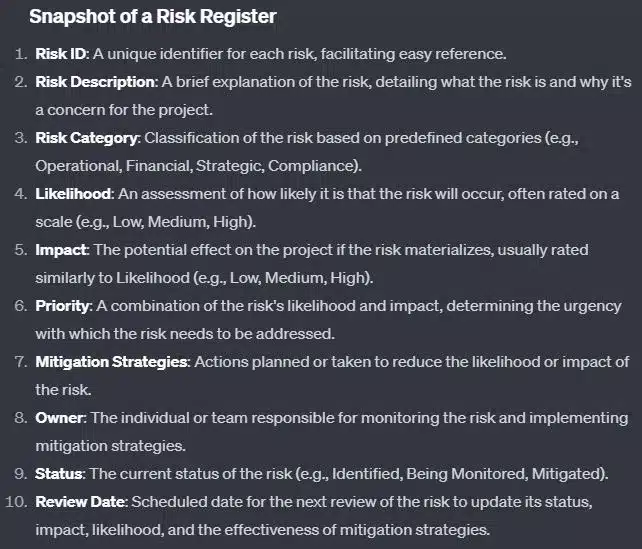In the journey of project management, envision navigating a river teeming with rapids. Your vessel, the project, is subject to the whims of unforeseen risks that lurk beneath the surface. To steer clear of potential dangers and ensure a smooth sail towards your destination, a robust risk management strategy is your indispensable compass. This includes the meticulous crafting of a risk register, the art of risk qualification, the science of mitigation, and the vigilant practices of reporting, tracking, and escalation.
Charting the Waters: The Role of a Risk Register
Picture a risk register as your map of the murky waters ahead, marking the locations of potential hazards. It’s a dynamic document that not only lists identified risks but also details their nature, impact, and the strategies for their mitigation. Imagine each entry as a beacon warning sailors of potential perils, allowing the crew to prepare or navigate away.
The Art of Risk Qualification
Qualifying risks involves a fine blend of intuition and analysis, akin to an experienced captain assessing the wind and the waves. It’s about distinguishing between the benign ripples and the treacherous whirlpools. By evaluating the likelihood and impact of each risk, you can prioritize them, ensuring that your attention and resources are focused on the most threatening ones.
Crafting the Shields: Risk Mitigation Strategies
Mitigation is about crafting your shields and armors. Whether it’s reinforcing the hull or charting a safer course, each mitigation strategy is tailored to buffer your project against the shocks of identified risks. This proactive approach involves detailed planning, from contingency reserves to alternative action plans, ensuring that you’re always a step ahead.
The Watchtower: Reporting, Tracking, and Escalation
In our nautical adventure, imagine having watchtowers along the riverbanks, constantly monitoring for signs of trouble. In project risk management, this translates to regular reporting and tracking of risks. It ensures that all stakeholders are aware of the project’s health and that risks are managed actively. Escalation, then, is the flare shot into the sky, signaling when a risk surpasses a threshold and requires immediate attention from higher-ups.
